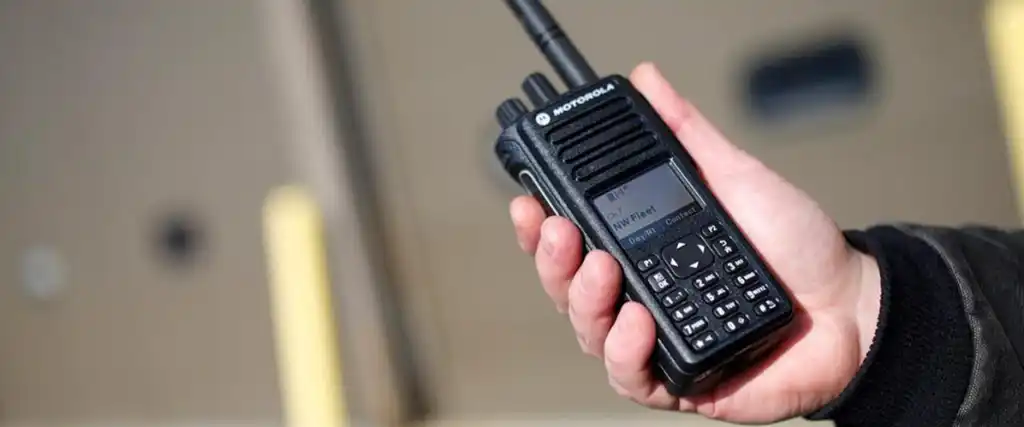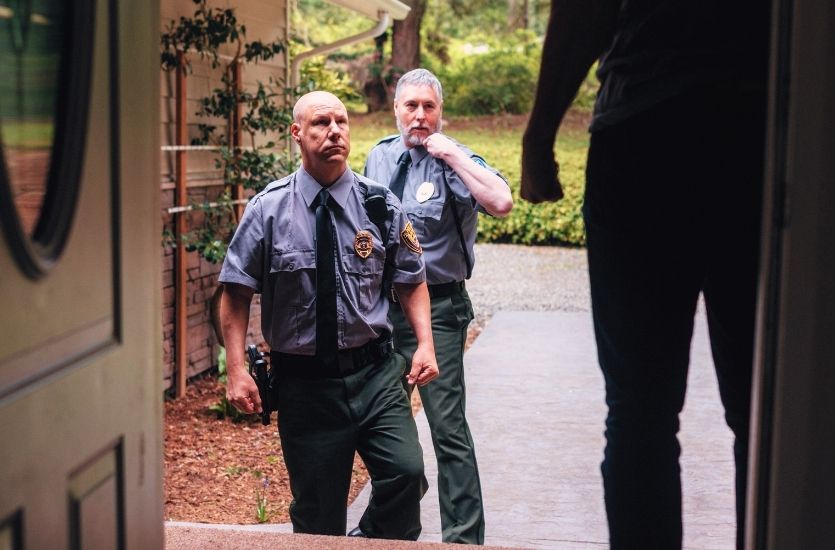Crime statistics from the first part of 2025 reveal a pretty favorable decline across several key categories. Property crime is down by 16%, motor vehicle theft has dropped 30%, violent crime is down 14%, and murder and robbery are both down by 21%.
On paper, this is great news. But if you’re watching the nightly headlines, it sure doesn’t feel that way. That disconnect has sparked a powerful movement in communities nationwide. More and more residents are stepping up, eager to partner with law enforcement to keep pushing those numbers down and make our neighborhoods safer, more connected places to live. At the center of this effort is a concept known as community policing.
What is Community Policing?
This begs the question: What is community policing? And even more so, is community policing really as helpful to law enforcement officers as it sounds? The answer is a resounding yes.
Community policing is a model that combines traditional policing strategies, such as patrols, investigations, and enforcement, with a proactive focus on community engagement. Instead of relying solely on responding to crimes after they happen, officers work alongside residents, businesses, and local organizations to identify issues early, reduce risk, and solve problems together.
This approach marks a meaningful shift from reactive policing to proactive crime prevention. Officers don’t just enforce the law. They become familiar faces in the neighborhoods they serve, building relationships that lead to greater cooperation, shared accountability, and improved public safety outcomes.
Over time, community policing has evolved to meet the unique challenges of different communities. From urban neighborhoods to rural towns, law enforcement agencies across the country have found that when residents are part of the solution, crime rates go down and trust goes up.
Core Concepts of Community Policing
Community policing continues to generate interest across the country, even as formal documentation has seen a slight dip. In 2016, 42% of local police departments reported having a written community policing plan. By 2020, that number had decreased to 32%. While the drop may reflect shifts in administrative focus or reporting methods, it also shows us a sizeable opportunity. More departments are embracing the philosophy of community policing informally, integrating its practices into day-to-day operations even without a formal written plan. As departments see firsthand the benefits of stronger community ties and proactive problem solving, many are laying the groundwork to turn informal strategies into structured, long-term initiatives.
At the heart of community policing are three foundational pillars that define how departments engage with residents and tackle crime:
- Community Partnerships: Strong relationships between the police and the community are key. This includes working closely with residents, neighborhood associations, faith-based organizations, schools, and local businesses. When people know their local officers and see them as partners rather than outsiders, trust builds—and so does the willingness to share information and collaborate on solutions.
- Prevention Over Reaction: Traditional policing often centers on responding to crimes after they occur. Community policing flips that approach, putting more emphasis on deterring crime before it happens. Officers actively monitor trends, engage with residents, and identify early warning signs that something may be wrong.
- Collaborative Problem Solving: Solving crime doesn’t happen in a vacuum. This concept encourages law enforcement to work with community members to pinpoint persistent challenges and co-create solutions. Whether it’s a troubled property, recurring thefts, or safety concerns at a school, long-term change happens through teamwork, not quick fixes.
The Benefits of Community Policing
During our research, we came across some interesting statistics from moveBuddha.com, a moving company booking platform. Their study reveals that neighborhood safety is at the top of the list for Americans thinking about relocating in 2025. An overwhelming 96% of respondents said a safe neighborhood is important when deciding where to move. Further, 77% called it very important, and another 17% said it was somewhat important.
But that raises an interesting question: What if steps could be taken to improve the city or neighborhood where you already live? If safety increased and trust in law enforcement grew, would more people choose to stay?
That’s the promise of community policing. Rather than relying solely on the police after a crime has occurred, this model emphasizes working with the community to improve safety and quality of life. When implemented effectively, the benefits reach far beyond crime statistics:
- Increased Trust Between Police and Residents: Regular, respectful interaction helps humanize officers and fosters open communication.
- Lower Crime Rates: Proactive engagement and early intervention help reduce opportunities for crime to occur.
- Greater Community Involvement: Residents who feel heard and included are more likely to participate in neighborhood watch groups, local meetings, and safety initiatives.
- Improved Officer Morale and Safety: Officers benefit from supportive community relationships, better intel, and stronger local partnerships.
- Better Quality of Life: Cleaner streets, safer parks, and more connected neighborhoods often result when law enforcement and residents collaborate.
Clearly, community policing isn’t just about fighting crime. It’s about building stronger, safer communities together.

Communication is the Backbone of Community Policing
At this point, you understand what community policing is. But let’s talk a bit about how it works. And like just about everything, a successful community policing strategy starts with communication.
Clear, consistent, and timely communication is what keeps community policing running smoothly. It’s not just about responding to calls. It’s about building relationships, sharing information, and staying connected. When officers regularly talk with residents, they hear about concerns before they escalate. When departments communicate internally, they stay coordinated and responsive. And when local partners like schools, nonprofits, and businesses are in the loop, everyone becomes part of the solution.
The flow of communication happens across multiple levels. Officers on patrol must maintain constant contact with dispatch. Supervisors need to coordinate resources efficiently. Community liaisons and outreach teams rely on regular updates from both the public and department leadership. And during events or emergencies, having fast, accurate communication can make all the difference.
Community policing thrives when information flows freely. Whether it’s a heads-up from a resident about suspicious activity, or a quick exchange between officers during a community event, communication builds trust, and trust builds safer neighborhoods.
How Two-Way Radios Support Community Policing Efforts
But here’s the elephant in the room. After all, we’re EMCI Wireless, a Motorola Solutions channel partner. And while we’re big believers in the philosophy behind community policing, we’re also here to help our readers and customers understand how the right communication tools make that philosophy work in the real world. Community policing isn’t just about people and policies. It’s also about having the right technology in place to support rapid response, coordination, and public safety.
Two-way radios remain one of the most powerful and reliable tools in law enforcement communication. They’re not just for emergencies. They’re an absolute must for building strong, responsive connections both inside the department and out in the field. Here’s how they support the day-to-day needs of community policing:
- Fast, Secure Communication: Immediate contact with dispatch, fellow officers, and community liaisons allows for quicker response and better coordination.
- Improved Coordination: Especially useful during neighborhood patrols, local events, or when working with community partners on response strategies.
- Situational Awareness: Radios keep everyone on the same page during emergencies or ongoing problem-solving efforts.
- Enhanced Officer Safety: A direct line to backup or additional resources increases peace of mind and operational security.
- Integration with Smart Technology: Today’s two-way radios can include GPS, encrypted messaging, and interoperability features that make it easier to connect across agencies and departments.
At the core of all of this is one goal: keeping officers connected so they can better serve their communities.
Building Stronger Communities, One Connection at a Time
Florida has long been an advocate of community policing efforts, with many departments embracing both community-oriented policing and community-based policing to build trust, reduce crime, and strengthen neighborhood relationships. From large metro areas to smaller municipalities, law enforcement agencies are working alongside residents to create safer, more connected communities.
At EMCI Wireless, we’re proud to support these efforts across southern and central Florida, serving areas far and wide, including Clearwater, Temple Terrace, North Miami Beach, Winter Park, and beyond. We understand that successful community policing doesn’t happen by chance. It requires intentional communication, thoughtful planning, and the right tools to keep everyone informed and connected.
Whether it’s maintaining a clear line between officers and dispatch or coordinating efforts during a neighborhood event, two-way radios play a super important role in the day-to-day work of community-based policing. As a trusted Motorola Solutions channel partner, we offer reliable communication solutions tailored to the unique needs of public safety agencies.
If your department is looking to strengthen its community policing strategy, we’re here to help. Contact EMCI Wireless today to learn how our two-way radio systems and support services can help power your mission and keep your community connected.

